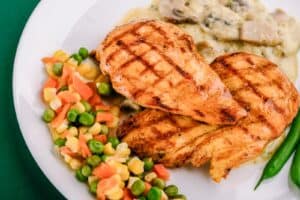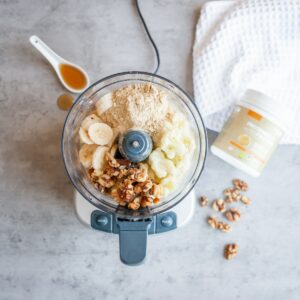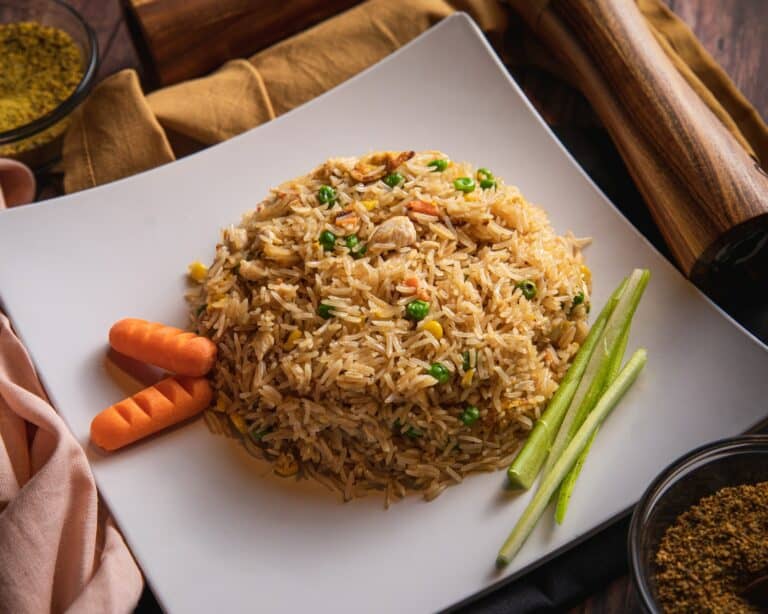Trail running has grown in popularity over the years and continues to attract countless enthusiasts who want to test their fitness abilities on rugged terrain. As a dedicated trail runner, you should know that proper nutrition plays a critical role in both your performance and your ability to recover from intense runs. In this article, we’ll explore trail running nutrition, including what to eat during trail running and how to time your meals, snacks, and hydration for optimal performance.
Nutrition Basics for Trail Running
To excel in trail running, it’s essential to understand the basics of nutrition. Macronutrients like carbohydrates, proteins, and fats are all vital components of a healthy meal plan for a trail runner. Carbohydrates are crucial for maintaining high energy levels during long distances, while proteins help repair and build muscles after a run. Healthy fats provide a rich energy source that helps you sustain your runs. Additionally, ensuring proper hydration is crucial for peak performance.
Pre-Run Nutrition
Before you tackle a trail run, it’s crucial to fuel your body with the right mix of carbohydrates, proteins, and fats. A healthy meal the night before your run can set you up for success on the trail. Carbohydrates should be the primary component in your pre-run meal since they are converted into glycogen stored in your muscles, which serves as the primary energy source for trail runners.
Some recommendations for pre-run meals and snacks include:

1. A well-balanced diet with whole grains like brown rice or quinoa, lean proteins such as chicken or tofu, and leafy green vegetables like spinach or kale
2. A bowl of oatmeal with almond milk, berries, and a spoonful of nut butter
3. A slice of whole-grain toast with peanut butter and banana
4. A smoothie with protein powder, banana, and almond milk
Remember, it’s essential to practice eating before training runs to avoid any gastrointestinal distress or stomach issues on race day.
Nutrition During Trail Runs
When it comes to what to eat during trail running, both solid foods and energy gels or chews have their place in your nutrition plan. Consuming real food during a trail run adds variety to your diet and can make you feel satiated, but energy gels provide a more compact and easily digestible source of energy. Below are some tips to help you decide which options are best for your run:
1. Energy Gels and Chews: These provide quick carbohydrates and typically contain between 100-150 calories per package. They are a convenient option when you need a quick boost of energy during a long run. Practice using different energy gel brands and flavors during your training runs to find the ones that work best for your taste and stomach.
2. Solid Foods: Including dried fruits, nut butter packets, and energy bars, solid foods offer more calories and nutrients than the average energy gel. However, more calories can be challenging for your stomach to digest during a race. Choose easily digestible options and try eating small amounts at regular intervals. Remember that solid foods can irritate your stomach during longer runs, so find a balance that works for you.
3. Hydration: Staying properly hydrated is essential during trail runs. Drink water regularly and consider sports drinks for runs lasting longer than one hour. Trail running can deplete your glycogen stores, and sports drinks contain simple carbohydrates and electrolytes to help replenish them.
Recovery Nutrition
Your body is most receptive to replenishing muscle glycogen and repairing muscle tissue in the 30-60 minutes following a run. Use this window to consume a meal or snack that includes a mix of carbohydrates, proteins, and healthy fats. Some popular recovery food options include:

1. A protein shake made with water, protein powder, and a banana
2. Greek yogurt with granola, honey, and fresh berries
3. A turkey or chicken sandwich with avocado on whole-grain bread
Additional Nutrition Tips for Trail Running Success
1. Customize your nutrition plan based on your personal preferences and unique needs.
2. Experiment with different foods and energy sources during training runs to avoid surprises on race day.
3. Adapt your nutrition plan for different weather conditions, race distances, and altitude changes.
Adapting Nutrition for Different Types of Trail Runs
When it comes to trail running, not all runs are created equal. Depending on the distance, elevation gain, and technicality of the trail, your nutritional needs may vary. For shorter, less technical trail runs, you can likely maintain adequate energy levels with minimal consumption of extra calories. However, for longer, more challenging trail runs or races, it is crucial to fuel with more calories and adjust your hydration levels accordingly.
Break your trail run into sections based on distance or time and plan your fueling strategy accordingly. For example, during an ultra-marathon, you may want to increase your carbohydrate intake and consume 200-300 calories per hour instead of the typical 100-150. Also, consider adapting your hydration strategy for runs at high altitudes or in harsh weather conditions, as your body may require additional fluids.
Overcoming Stomach Issues and Fueling the Mind

Many trail runners experience gastrointestinal distress during long runs, primarily when relying solely on gels and chews for energy. If you experience stomach issues during your trail runs, consider incorporating real food into your nutrition plan as it can be easier to digest and provide a wider range of nutrients. You may also benefit from consuming small amounts of food consistently throughout your trail run, rather than larger portions in one go.
It is also worth noting the role of mental wellness in the context of trail running nutrition. Eating well can support not only your physical performance but also your mental well-being during long, challenging trail runs. Consuming a mix of real food and energy supplements may help improve your mood and mental focus, so consider blending both types of fuel sources into your nutrition plan.
The Importance of Post-Run Recovery Nutrition in Preventing Injuries
Trail running places significant stress on your muscles, joints, and connective tissues. To minimize the risk of injury, it’s essential to focus on proper nutrition after your trail runs. Consuming a well-balanced, nutrient-dense meal within 30 to 60 minutes of your run can help boost your body’s recovery process, decreasing inflammation and promoting muscle repair.
To further enhance recovery and reduce the risk of injury, focus on incorporating anti-inflammatory foods like dark leafy greens, fatty fish, berries, and nuts into your post-run meals. Moreover, consider adding supplements like omega-3 fatty acids or tart cherry juice to your diet, which may aid in reducing inflammation and accelerating recovery.
Remember, a strategic and thoughtful approach to trail running nutrition, both during and after your runs, can not only improve your performance but also protect your body from injury and keep you running strong for years to come.
Final Thoughts
In conclusion, trail running nutrition is a vital component of your performance and recovery. Use the tips and information provided in this article to create a personalized nutrition plan that works for you. Whether you prefer energy gels or solid foods like peanut butter-filled pretzels, find what fuels your body best and practice eating during your training runs. Don’t let poor nutrition be an obstacle to your trail running success – fuel your body well, and you’ll be more prepared to hit the trails and reach new running heights.
Other suggested articles:
- How to Start Trail Running: A Comprehensive Guide for Beginners
- Discover the Benefits of Trail Running for the Mind
